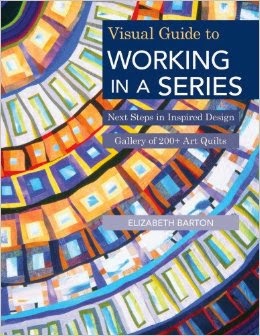Working in Series online with quiltuniversity.com which starts this Friday and is an exploration of what, when, why and how one should work in a series. It's a really different kind of class and one that can only be done online, for it involves research, and taking time to think deeply about where you are (artistically speaking!) right now. It's a perfect kind of class to take virtually. You have till Sunday to sign up for it! By the way this is the last class I'll be doing with Quilt University as QU closes at the end of this year - however....many QU teachers (including me) have signed up to continue teaching with Academy of Quilting.
Abstract Art for Quiltmakers in real 3D life! in Falmouth, MA This class runs for 5 full days from October 14-18. (please contact Linda Gallagher if you're interested, there are just 2 places left in the class).
This is a new class for me - I've been admiring and analyzing the many varied styles of abstract art made by female artists since early in the 20th century. Many of these women were attached to male artists who are much better known - however the women's work is just as good - sometimes better! It deserves to be studied and there is so much inspiration to be gain from such a study. This class is a design class with specific instructions on how to design many different kinds of abstract art. We're also going to dye the fabric! And construct 2 quilt tops! Plus lots of one on one instruction, even (with luck) a few witticisms from yours truly!
Advantages of Online Class: no travel, cheaper, easy to fit into your daily life, time to think between classes.
Advantages of Real Live class: one on one real contact with the teacher, getting immediate help and feedback, concentration: being able to (and compelled to!) focus just on making art for several consecutive days, meeting other quilt artists and learning from them.
I don't see these two different kinds of workshops as being either/or - there are some things and some points in your life where one approach will work better for you. comments?
Feedback! As I studied abstract art for the Abstract Art for Quiltmakers class, I made a number of small quilts based on my findings and you can see these below...I want to choose a couple of these ideas to develop into a series - so please let me know which you find the most interesting and engaging - and why! which are the freshest ideas? Which attract you the most?
 |
| Footfalls in the Memory |
 |
| Dancers |
 |
| Four Rooms with a Window |
 |
| Highlands, Fall |
 |
| The First Machine |
 | ||||
| Brush or Scissors? |


















